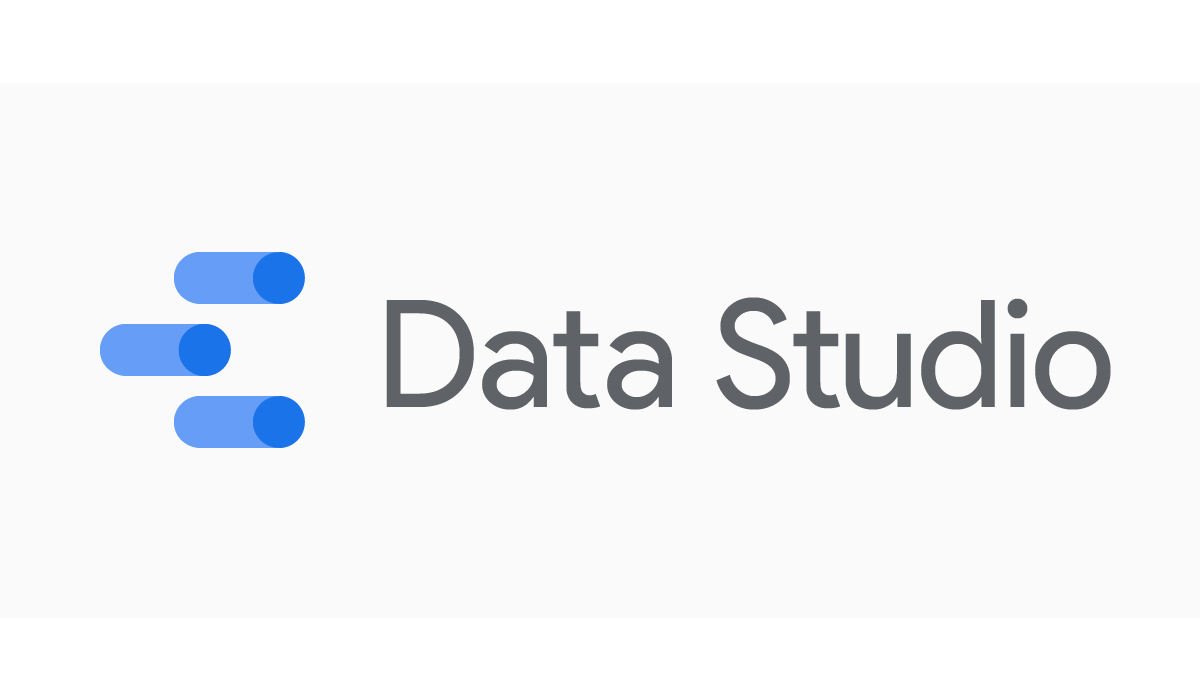In today’s data-driven world, the ability to effectively visualize and communicate complex information is more crucial than ever. Enter Google Data Studio – a powerful, free tool that transforms raw data into stunning interactive dashboards and reports.
Google Data Studio empowers users to connect various data sources, create visually appealing charts and graphs, and build dynamic, shareable reports. Whether you’re a marketer tracking campaign performance, a business analyst monitoring KPIs, or a data journalist telling stories with numbers, Data Studio offers a user-friendly platform to bring your data to life.
The importance of data visualization in storytelling cannot be overstated. Humans are visual creatures, and our brains process images 60,000 times faster than text. By presenting data in visually engaging formats, you can:
- Quickly convey complex information
- Highlight key trends and patterns
- Make data more accessible to non-technical audiences
- Encourage data-driven decision making
Using Data Studio for creating interactive visualizations offers numerous benefits:
- Easy to use: Drag-and-drop interface requires no coding skills
- Real-time updates: Reports automatically refresh as your data changes
- Customizable: Extensive options for branding and design
- Collaborative: Share and edit reports with team members
- Free: No cost for basic features and integrations
In this comprehensive guide, we’ll walk you through the process of using Google Data Studio to create stunning visual reports. From setting up your first project to advanced data storytelling techniques, you’ll learn how to leverage this powerful tool to transform raw data into compelling visual narratives.
Setting Up Data Studio
Getting started with Google Data Studio is straightforward. Here’s how to set up your first project:
Creating a New Report
- Go to datastudio.google.com and sign in with your Google account.
- Click the “+ Create” button in the top left corner.
- Select “Report” from the dropdown menu.
You’ll now see a blank canvas ready for your first visualization.
Connecting Data Sources
Data Studio can connect to a wide range of data sources, including:
- Google products (Sheets, Analytics, Ads, etc.)
- SQL databases (MySQL, PostgreSQL)
- CSV files
- Social media platforms
- And many more through partner connectors
To connect a data source:
- Click “Add data” in the right sidebar.
- Choose your data source from the list.
- Follow the prompts to authenticate and select your specific data set.
Pro tip: For this tutorial, we’ll use a Google Sheets document. If you’re following along, create a simple spreadsheet with some sample data (e.g., monthly sales figures).
Importing and Formatting Data
Once your data source is connected, you’ll see a list of available fields. Here’s how to prepare your data:
- Review the automatically assigned data types (text, number, date, etc.).
- Click on a field name to adjust its type if needed.
- Use the “Add a field” button to create calculated fields for more complex metrics.
For example, if you have separate columns for revenue and expenses, you could create a new “Profit” field with the formula: Revenue - Expenses.
Remember, clean and well-structured data is the foundation of great visualizations. Take the time to ensure your data is accurate and properly formatted before moving on to creating charts.
Creating Visualizations
Now that your data is connected and formatted, it’s time to bring it to life with visualizations. Data Studio offers a wide array of chart types to suit different data sets and storytelling needs.
Overview of Available Chart Types
Some popular visualization options include:
- Line and area charts (great for showing trends over time)
- Bar and column charts (ideal for comparing categories)
- Pie and donut charts (for showing proportions of a whole)
- Scatter plots (perfect for exploring relationships between variables)
- Maps (for geographical data)
- Scorecards (to highlight key metrics)
- Tables (for detailed data exploration)
To add a chart:
- Click the “Add a chart” button in the toolbar.
- Select your desired chart type.
- Drag the chart onto your canvas and resize as needed.
Customizing Visualizations
Data Studio offers extensive customization options to make your visualizations pop:
Colors:
- Click on your chart and use the “Style” tab in the right sidebar.
- Choose from preset color palettes or create your own.
- Assign specific colors to different data series for consistency.
Fonts:
- Adjust font family, size, and style for various chart elements.
- Use the “Theme” menu to apply global font settings.
Labels:
- Toggle data labels on/off.
- Customize label content (e.g., show values, percentages, or both).
- Adjust label positioning for clarity.
Example: For a line chart showing monthly sales, you might use a bold sans-serif font for axis labels, add data points to highlight specific values, and use your brand’s color scheme for different product lines.
Adding Interactive Elements
Interactivity transforms static reports into engaging, exploratory tools. Here are some ways to add interactivity:
Filters:
- Click “Add a control” in the toolbar.
- Choose a filter type (e.g., drop-down list, checkbox).
- Select the field to filter on.
- Place the filter on your canvas.
Date Range Controls:
- Add a date range control from the “Add a control” menu.
- Connect it to date fields in your data.
- Users can now dynamically adjust the time period displayed.
Drill-downs:
- Create hierarchical charts (e.g., Region > Country > City).
- Enable drill-down in the chart’s interaction settings.
- Users can click to explore deeper levels of data.
By combining these interactive elements, you create a dynamic report that allows users to explore the data from multiple angles, uncovering insights that might be missed in a static presentation.
Building Interactive Dashboards
A well-designed dashboard brings together multiple visualizations to tell a cohesive data story. Here’s how to create an effective interactive dashboard in Data Studio:
Combining Multiple Visualizations
- Start with a clear goal: What story are you trying to tell?
- Choose complementary chart types that work together.
- Arrange charts logically on the canvas (e.g., overview metrics at the top, details below).
- Ensure all charts use consistent date ranges and filters.
Example: A sales dashboard might include:
- Scorecard showing total revenue
- Line chart of sales over time
- Bar chart of top-selling products
- Map showing regional performance
- Table with detailed transaction data
Adding Text Boxes and Annotations
Text elements add context and guide users through your dashboard:
- Use text boxes for titles, subtitles, and explanatory notes.
- Add bullet points to highlight key takeaways.
- Include instructions for using interactive features.
To add annotations to specific data points:
- Right-click on a data point in a chart.
- Select “Add annotation.”
- Enter your text and customize the appearance.
Annotations can draw attention to important events or outliers in your data.
Creating Navigation and Layout
For complex reports with multiple pages:
- Use the “Add a page” button to create new pages.
- Add navigation elements (e.g., buttons or a table of contents).
- Maintain consistent layout and styling across pages.
Consider user flow:
- Place the most important information “above the fold.”
- Group related metrics and charts together.
- Use white space effectively to avoid clutter.
Pro tip: Create a wireframe or sketch of your dashboard layout before building in Data Studio. This helps ensure a logical flow of information.
By thoughtfully combining visualizations, adding context through text and annotations, and creating an intuitive layout, you’ll build dashboards that are both informative and easy to navigate.
Styling and Branding
A polished, branded look elevates your Data Studio reports from functional to professional. Here’s how to style your reports for maximum impact:
Customizing Themes and Colors
Data Studio offers built-in themes, but creating a custom theme ensures consistency with your brand:
- Go to the “Theme and layout” menu.
- Click “Customize” to access detailed theme settings.
- Adjust global styles for text, charts, and backgrounds.
- Save your custom theme for future use.
When choosing colors:
- Use your brand’s color palette as a starting point.
- Ensure sufficient contrast for readability.
- Consider color-blind friendly options.
Example: If your brand uses navy blue and orange, you might use navy for headers and axis labels, and various shades of orange for data series in charts.
Adding Logos and Branding Elements
Incorporate your visual brand identity:
- Use the “Image” tool to add your logo.
- Place the logo in a consistent location (typically top left or right).
- Add a branded header or footer to each page.
Consider creating a reusable template:
- Design a report with your preferred layout and branding.
- Go to File > “Make a copy” to use as a starting point for new reports.
Ensuring Consistency with Brand Guidelines
Maintain a professional look by adhering to your brand guidelines:
- Use approved fonts throughout the report.
- Stick to your brand’s color palette.
- Incorporate brand-specific icons or graphics where appropriate.
- Maintain consistent terminology and naming conventions.
Pro tip: Create a style guide specifically for Data Studio reports. This ensures all team members create cohesive, on-brand visualizations.
By paying attention to these styling and branding details, you transform your Data Studio reports from mere data presentations into polished, professional assets that reinforce your brand identity.
Sharing and Embedding
One of Data Studio’s most powerful features is its flexibility in sharing and distributing your reports. Let’s explore the various options:
Sharing Options
Data Studio offers granular control over who can access your reports and what they can do:
- View: Recipients can see the report but can’t make changes.
- Edit: Collaborators can modify the report structure and design.
- Comment: Users can leave feedback without changing the report.
To share a report:
- Click the “Share” button in the top right corner.
- Enter email addresses or get a shareable link.
- Choose the appropriate permission level.
- Optionally, add a custom message.
You can also schedule email delivery of reports to stakeholders at regular intervals.
Embedding Visualizations
Integrate Data Studio reports directly into your website or blog:
- Go to File > “Embed report.”
- Customize the embed size and options.
- Copy the generated HTML code.
- Paste the code into your website.
Pro tip: Use the “Enable embedding” option to allow the report to be viewed on third-party sites without requiring Google sign-in.
Collaboration and Version Control
Data Studio supports real-time collaboration, similar to Google Docs:
- Multiple users can work on a report simultaneously.
- See who else is currently viewing or editing.
- Use comments to discuss specific elements.
For version control:
- Go to File > “Version history.”
- Name and save important versions.
- Revert to previous versions if needed.
By leveraging these sharing and embedding features, you can ensure your data reaches the right audience in the most convenient format, whether that’s a live dashboard on your website or a regularly scheduled email report.
Data Storytelling with Data Studio
Creating visually appealing charts is just the beginning. The real power of Data Studio lies in its ability to tell compelling stories with data. Here’s how to elevate your reports from mere presentations to engaging narratives:
Techniques for Effective Data Storytelling
- Start with a clear narrative: What’s the main message you want to convey?
- Use a logical flow: Guide your audience through the data step-by-step.
- Highlight key insights: Use color, size, or annotations to draw attention to important points.
- Provide context: Explain why the data matters and how it relates to broader goals.
- Be selective: Include only the most relevant data to support your story.
Using Visualizations to Highlight Insights and Trends
- Choose the right chart type for your data and message.
- Use comparison charts to show before/after scenarios.
- Incorporate trendlines to emphasize patterns over time.
- Utilize heat maps or color scales to quickly convey performance levels.
Example: Instead of just showing a table of sales figures, create a map that color-codes regions by performance, with drill-down capabilities to explore specific areas.
Creating Narratives with Data
- Use text boxes to provide narration: Guide users through your insights.
- Incorporate “scroll to reveal” techniques: Build anticipation by revealing data progressively.
- Ask and answer questions: Pose questions in headers, then use visuals to answer them.
- Show cause and effect: Use multiple charts to illustrate how one metric influences another.
- End with a call to action: What should the audience do with this information?
Remember, effective data storytelling is about more than just presenting numbers – it’s about crafting a compelling narrative that drives understanding and action.
Unleash Your Creativity: Elevating Your Visual Reports
As you become more comfortable with Data Studio’s features, don’t be afraid to push the boundaries of what’s possible. Here are some advanced techniques to take your reports to the next level:
- Custom CSS: Use the “Edit CSS” feature to fine-tune the appearance of your reports beyond the standard options.
- Blended Data: Combine multiple data sources in a single visualization to uncover cross-functional insights.
- Community Visualizations: Explore and incorporate custom chart types created by the Data Studio community.
- Dynamic Parameters: Use parameters to create user-input fields that dynamically adjust your visualizations.
- Calculated Fields: Leverage Data Studio’s formula language to create complex metrics tailored to your specific needs.
- Responsive Design: Utilize Data Studio’s auto-sizing options to ensure your reports look great on any device.
By mastering these advanced techniques, you’ll be able to create truly unique and powerful data experiences that set your reports apart.
Frequently Asked Questions (FAQ)
Q: Can I use Data Studio with data sources other than Google products? A: Yes, Data Studio supports a wide range of data sources, including SQL databases, CSV files, and various third-party applications through partner connectors.
Q: Is Data Studio free to use? A: Data Studio is free to use with some limitations on features and data sources. There is also a premium version available with additional capabilities.
Q: Can I create interactive reports with Data Studio? A: Absolutely! Data Studio excels at creating interactive visualizations and dashboards that allow users to explore data through filters, date range controls, and other interactive elements.
Q: How can I collaborate with others on Data Studio reports? A: Data Studio supports real-time collaboration, allowing multiple users to work on the same report simultaneously. You can also share reports with specific individuals or make them publicly available.
In conclusion, Google Data Studio is a powerful tool that enables you to transform raw data into stunning visual reports and interactive dashboards. By mastering its features – from basic chart creation to advanced data storytelling techniques – you’ll be able to communicate complex information clearly and compellingly.
Remember, the key to great data visualization is not just in the tools you use, but in your ability to uncover meaningful insights and present them in a way that resonates with your audience. With practice and creativity, you’ll be creating professional-quality reports that drive understanding and inspire action.
So dive in, experiment, and let your data tell its story through Google Data Studio!


